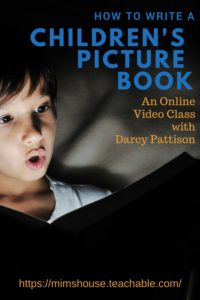Thanks to the computer industry, we no longer have first readers, we have beta readers. Early versions of software that engineers expect to be riddled with problems were called beta versions. Beta is the second letter in the Greek alphabet, so presumably, the alpha versions were kept all in-house. Betas were the first public versions to be released.
The terminology has come over to writing and we now have beta readers. The analogy holds in some ways: the versions we send to outside readers probably isn’t the “alpha” version; instead, it’s a version that is ready for a public audience—but not ready to be published. We expect problems: typos, grammar slip-ups (Grammar Queens, I Love You!), plot holes, character inconsistencies, factual errors, and so on.
What do you want from your Beta Readers?

Factual details. My WIP is set on Bainbridge Island, which sits in the middle of Puget Sound near Seattle, WA. I’ve visited a couple times because my brother- and sister-in-law live there. However, I’ve not lived there, and I’m not grounded in everything BI. I’ve asked them to read through for factual details related to the setting.
To write this story, I drew on my trips to the area, as well as maps, views from Google Earth, historical accounts of the area, writings about the area, information about the local flora and fauna. I’ve done my homework. But there’s nothing to beat living in the locale for years. I would never have dared to set the story in the area except I knew I had these two gracious beta readers.
Bored. I also asked them to flag places they were bored. Wow! Do I need this one. The overall pacing from chapter-to-chapter, and the local pacing from paragraph-to-paragraph both concern me. I want the story to pull a reader along without a pause. If a beta reader is bored, I need to know. I can fix it, using a variety of tools. I just need to know where to work on it.
Confused. Likewise, if the flow of the story confuses the reader, I need to know. Of course, there may be places you WANT the reader to be confused. I’m not talking about that. I’m looking for places where the reader has no idea what is happening. Again, I can fix it: I don’t want beta readers to suggest HOW to fix it. I just want to know where to pay attention.
Consistency. In characterization, I find my biggest problem is consistency in portraying emotions, motivations, reactions and so on. Part of the process of writing is to find these deeper issues within your character, and for me, I often find them late in the story. That means I have to go back and make sure I’ve set up a motivation and expressed it consistently across the story. And sometimes, I miss something.
While Beta Readers Read

This time, I’m trying not to work on the story while the beta readers do their thing. That doesn’t mean I’m not thinking about the story. On the contrary, it’s in the background of my thoughts all the way.
We went to see The Avengers movie last week. If you saw it (SPOILER ALERT), there’s a huge action scene at the end with all the Avengers protecting the explosive device while robots come at them. It’s a great moment because the team has come together and they are working in concert. Besides that character moment, it’s also a huge action scene. And I mean huge. I almost turn away these days at the fast-paced fighting because there is moment after moment of continuous fighting. The last Transformer movie struck me this way, too: when there’s too much action, it deadens the moment for me.
But it also gave me a new perspective on the ending of my story. The hero doesn’t take a big enough part in the action. He is there (hurrah!). He is active (hurrah!). But his parents get in the way. I need to get rid of them and pit him directly against the villain.
In other words, I hit the target with the ending, but it’s not a bulls-eye, yet.
That’s the sort of thing I’m thinking about while the beta readers read. Where have I hit the target, but I’m not hitting the bull’s eye?
I may not be typing words into a program about the story during this time, but I’m working on it. When I get it back, I’ll have a flurry of revisions to do. Isn’t it great?


Thanks for this explanation of how we came to use the word “beta” for our first readers. That never made sense to me, since beta seemed like it should be for second readers….